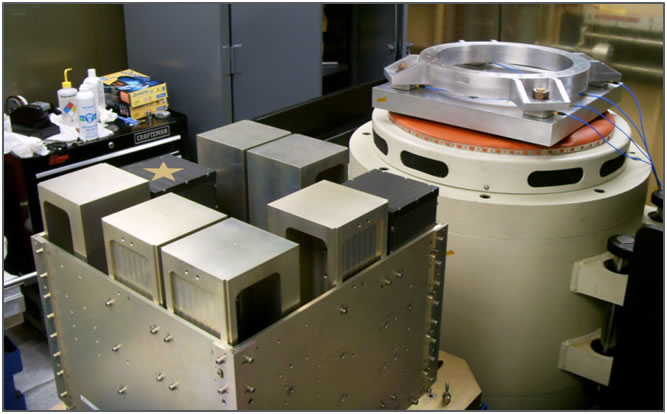Vibration
Two rounds of vibration testing were performed: qualification vibration testing and acceptance vibration testing. Both rounds were performed at the Naval Postgraduate School in Monterey, CA. The qualification vibration testing was performed in an engineering model of the NPSCul structure, which holds eight test P-PODs (the chosen CubeSat launcher for the ELaNa VI mission). Only one other CubeSat was testing at the same time as CSSWE, thus six P-POD mass simulators were used during qualification vibration testing. The image below shows the NPSCul structure with CSSWE (marked with a star), one other test P-POD, and six P-POD mass simulators within the NPSCul structure, as well as the shaker head for the vibration testing at NPS.

During qualification vibration testing, CSSWE saw a maximum of 9.292 GRMS on the Z-axis (vertical axis), 13.27 GRMS on the X-axis (REPTile collimator axis), and 18.32 GRMS on the Y-axis (eight-cell panel side). After all three axes were tested, CSSWE successfully passed a full comprehensive performance test, indicating that it had passed qualification vibration testing.
Acceptance vibration testing was performed after CSSWE was delivered, with all eleven CubeSats in each of their flight P-PODs within the flight NPSCul structure. The NPSCul structure passed acceptance vibration testing with all flight CubeSats onboard.

